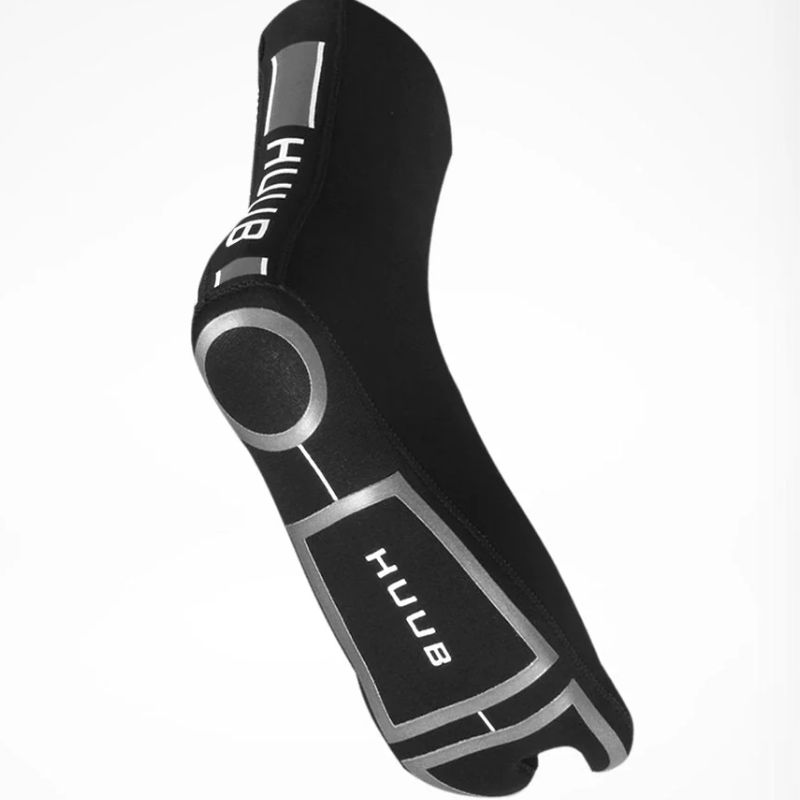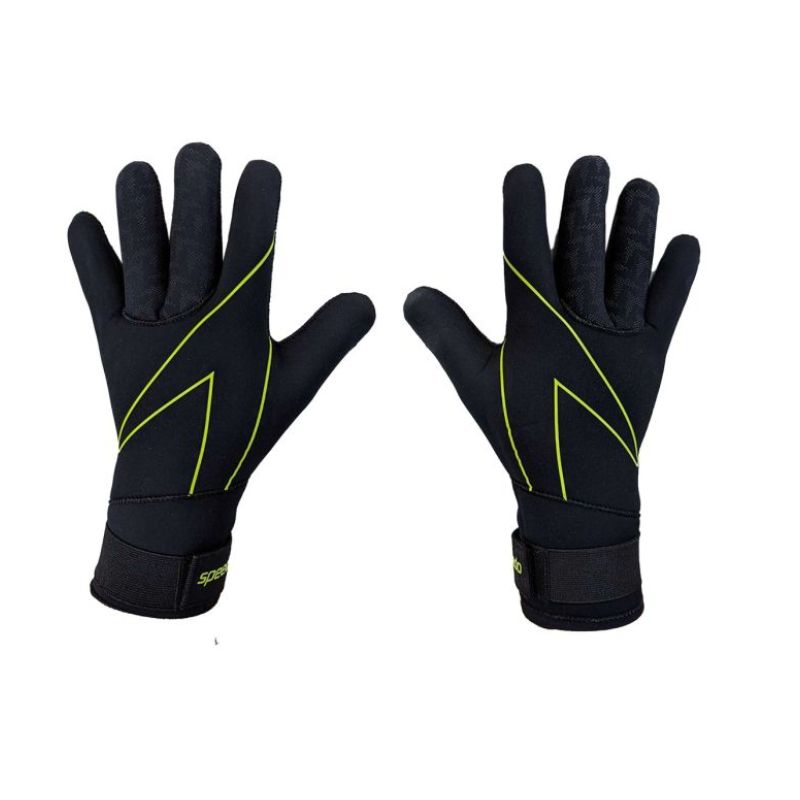What to wear wild swimming for a comfortable and safe swim this summer
Heading to the lakes? Here's what to wear wild swimming to stay comfortable and swim safely this summer, with tips from the experts


You might think (and hope) that 'cold water swimming' wasn't a summer activity, but in the UK, waters rarely get above 15 degrees - and this counts as 'fresh' at best. So, if you're planning to take a dip this year in the lakes, ponds, and seas around the country, it's worth getting to know the dress code.
Cold water swimming, or wild swimming as it's also known, is not new. Women have been 'taking to the waters' to aid physical and mental health for centuries. But there has been growing interest in the feel-good benefits of immersing yourself in natural waters, alongside a rise in daily ice baths and lido lounging in recent years.
"Swimming is a brilliant form of exercise. It uses almost all the muscles in your body, makes you focus on breathing and quietens the mind. And it's low impact, meaning it's great for gentle exercise or rehabilitation after injury,” says Ella Foote, a certified RLSS Open Water Lifeguard and STA Open Water Coach. "Outside, you are increasing the benefits by breathing in fresh air, immersing yourself in nature and exposing yourself to natural daylight - all scientifically proven to improve your wellbeing. When you are experiencing the zing of cold water, your senses are picking up sounds, smells and textures. It feels exhilarating.”
Like any activity that takes you out of your comfort zone, it can feel intimidating to know where to begin if you're new to wild swimming. So, we've asked experts for their advice on how to be comfortable and safe taking the plunge with what to wear wild swimming.
What to wear wild swimming
1. Swimsuit
A swimsuit is essential for wild swimming in the summer months - but it doesn't need to be anything special, says Foote, also author of How To Wild Swim and working with NEXT to promote cold water swimming this year. "Anything too fussy can impact swimming - frills and ties are nice for sunbathing but not so great in the water," she says.
"It should be like a decently fitted bra. You should feel supported in the bust, not squashed or too loose. Thicker straps or suits with adjustable straps are better for bigger busts. Thin straps that cross over the back or a racerback style can be even more comfortable and allow better shoulder movement for swimming."
The type of swimsuit you choose can also decide how warm you stay, Foote adds. "A higher neckline means you will avoid scooping up water as you swim, while swimwear that covers your back to the neck can feel warmer in cooler water and windy conditions."
Sign up to our free daily email for the latest royal and entertainment news, interesting opinion, expert advice on styling and beauty trends, and no-nonsense guides to the health and wellness questions you want answered.
Stuck for choice? Here are three of my favourites from three of the best swimsuit brands.

This thermal one-piece swimsuit is part of Speedo’s new Wild Swim collection. It incorporates a lightweight petroleum-free rubber to help to keep the torso warmer, while the neon yellow panels provide greater visibility.

Designed with movement in mind, the high neck means less drag, while the front zip makes it easier to change into (and out of)-always a plus when there is no changing room in sight.

Proving you don’t need to scrimp on style when buying a swimsuit for sport rather than sunbathing, this swimsuit provides comfort and coverage without looking frumpy.
2. Changing robe
Robes have become increasingly popular in recent years as a multi-tasking must-have. They help you keep you warm and dry and protect your modesty when changing after your swimming workout.
"Waterproof robes are a fantastic tool in any swimmer’s kit, but they can vary significantly,” says Catherine Morris, who heads up product development at paddleboarding and outdoor kit company Red. "Cheaper nylon is stiff and bulky, while a more premium technical fabric that drapes is more comfortable, flattering and lightweight. Also, consider whether it has good waterproof performance without the nasty chemicals (PFC-free) and what it looks like. The more comfortable you feel in your robe, the more you'll use it beyond the swim."
What you wear after your swim is just as important as what you wear during the swim, says Caroline Saxon, an open-water swimming coach and founder of The Outdoor Swimming Company. "Be prepared for that air temperature when you get out to reduce the effects of after drop. You need layers, warm clothes to warm you back up (in colder months, ski clothes are effective if you have them), and no jeans. What you already have in your wardrobe will be fine. Bobble hat, long sleeve tops, vests, jumpers, warm trousers, thick socks and walking boots for afterwards."
On warmer days, you might want to opt for a poncho-style towel robe instead.

A regular on ‘Best of’ lists, and the tried and tested favourite of woman&home's digital health editor Grace Walsh, this robe ticks all the boxes - length, sustainability, coziness, comfort and practicality. "It feels lightweight despite the size, making it easy to throw in the back of the car or across a carry bag to the beach," she says.

Billed as the original dry robe company, this long sleeve robe is made from 100% recycled nylon and polyester, is fleece-lined, lightweight and waterproof. It comes in a huge variety of colours and patterns, so there's something for everyone.

A go-to on warmer days, this poncho towel boasts a bamboo and cotton blend for a supremely comfortable and water-wicking layer. It has a spacious hood, a kangaroo pocket and enough length to avoid any embarrassment when changing. It also comes in three unique colours.
2. Footwear
Arguably, you feel how your feet do. It's why you invest in proper hiking shoes or running shoes. So, consider your footwear when cold water swimming, not only for protection but for insulation.
“Organised venues are required to undertake risk assessments and tend to have fewer hazards due to being managed, lifeguarded and maintained, but a 'wild swimming' location isn’t, and this is where boots and shoes are helpful to protect your feet from any submerged objects such as glass, bricks and stones. Boots should fit you well and have a sole to prevent you from injuring your feet,” says Saxon.
“If necessary, you can swim in an old pair of trainers to start with, until you find your feet (no pun!) and decide that cold swimming is for you,” suggests Sue Wilson, an open water coach and a Mental Health Swims host.
Alternatively, you can invest in neoprene socks with reinforced soles, which are waterproof and provide insulation.
3. Gloves
The first things that get cold are your extremities (head, hands and feet), so gloves can be beneficial but as with swimsuits, it is down to personal preference.
“My hands are an indicator of whether I have been in the water too long, I don't wear them personally. However, many people have circulatory issues in their hands and gloves make cold waters more bearable," says Saxon.
"I recommend choosing a pair of close-fitting neoprene gloves that fit snuggly around your wrist. A pair relatively easy to get on and off is the most ideal option," says Wilson.

A favourite brand among open water swimmers for their fit, these gloves are soft and stretchy so easy to use. They are full-coverage gloves so you may not need them in warmer waters but will be a great accessory year-round if you're prone to cold fingers.
4. Eye protection
It is crucial to look after your eyes when open water swimming, whether or not your face is submerged. "Goggles protect our eyes from potential chemicals and pollutants in water, prevent our eyes from getting sore, and enhance visibility. If you are a contact lens wearer then goggles are essential [especially if you're swimming every day or very regularly]. Either opt for some daily disposable contact lenses under tight-fitting waterproof swimming goggles or purchase prescription goggles and forgo the lenses altogether,” says Nimmi Mistry, professional services optician at Vision Direct.
"Sunglasses are also key and protection from UV is essential if you're swimming in hot, sunny weather. All sunglasses (with a fixed tint) should carry the CE mark. If you want to ensure extra comfort for your eyes while in bright conditions, I'd recommend polarised lenses. These lenses contain a special filter that blocks glare caused by reflected light, such as sunlight reflecting off water. These can help reduce eyestrain, enhance contrast, and provide clearer vision."
5. The extras
- Beanie hat: Keep the chill at bay with a beanie hat, even when you are in the water if you are not ducking under.
- Towel: Choose a quick-drying, packable travel towel for ease.
- Wipes: You might not be able to shower but you can still freshen up after your salty sea dip.
- Sunscreen: It's crucial to wear SPF. The American Academy of Dermatology Association advises using sunscreen that protects against UVA and UVB rays, is SPF 30 or higher, and is water resistant. While some use the same sunscreen across their body, experts recommend different SPF factors for face and body.
- Flask: Don’t forget a flask of something warm for after your swim - and ideally one with a cup so you can drink easily.
- Dry bag tow float: These bright buoyancy devices improve safety and floatation, increase your visibility and keep valuables safe.
Tips for staying safe when wild swimming
To reduce risks and make sure you get all the benefits of cold water swimming, precautionary steps are paramount. "Local knowledge (whether swimming close to home or while on holiday) is key, alongside sensible preparation and self-awareness. Always swim with others, especially people who know the area and remember not to push your limits. There is no ego in open water swimming," says Wilson.
Along with knowing what to wear wild swimming, swimmers should join a coached introductory course to learn to swim safely outside where possible. "You need to learn your body, and how you react to the water to identify how long you should stay in the water. There are no safe rules of thumb; you need to reconnect with the water, your breath and nature," says Saxon.
A journalist with two decades of experience, Susan interviewed A-list names in film and TV before going freelance and focusing on health, wellbeing, and lifestyle features. She has since spoken to world-renowned experts on the most innovative and effective ways to look after your mind and body; her work appearing in publications such as Daily Express, Daily Mirror, Metro, Fabulous and The Telegraph. When Susan isn’t working on her laptop, she is most content hiking in the Peak District or finding quiet camping spots to while away a weekend and knows first-hand the restorative benefits of being outdoors.






